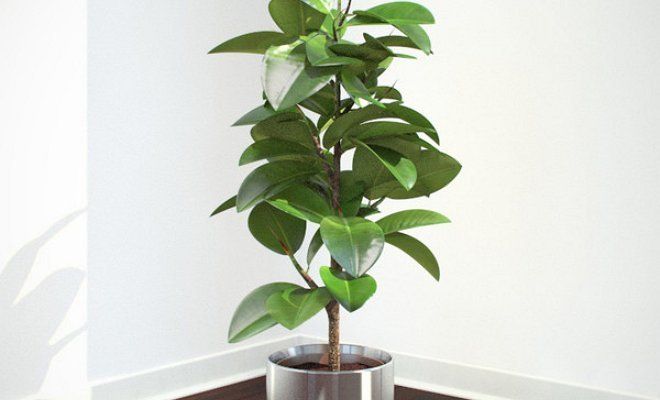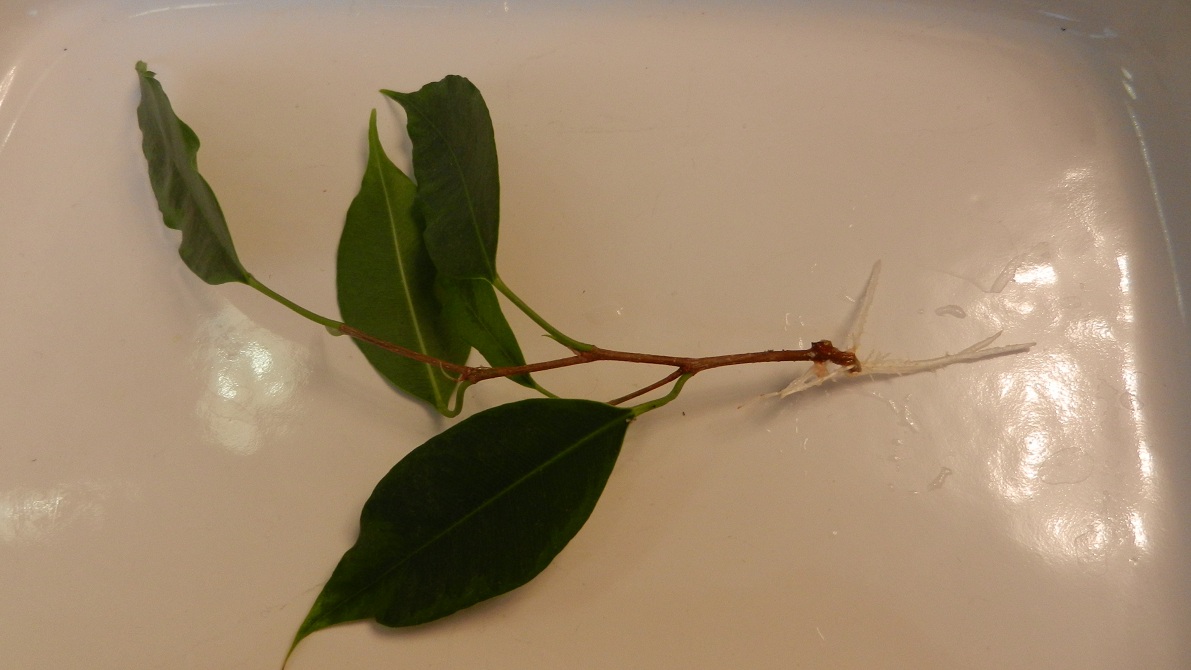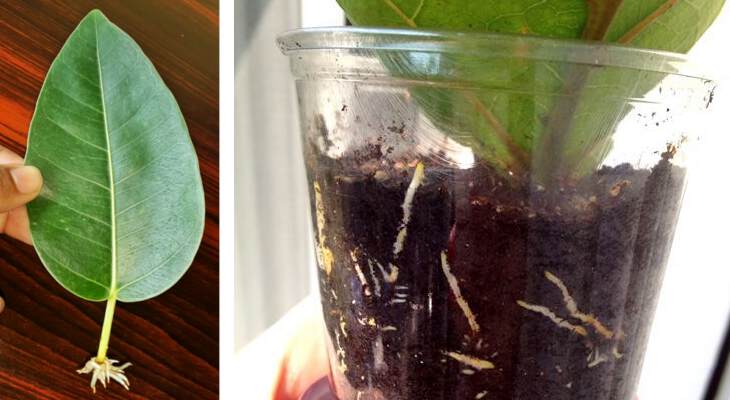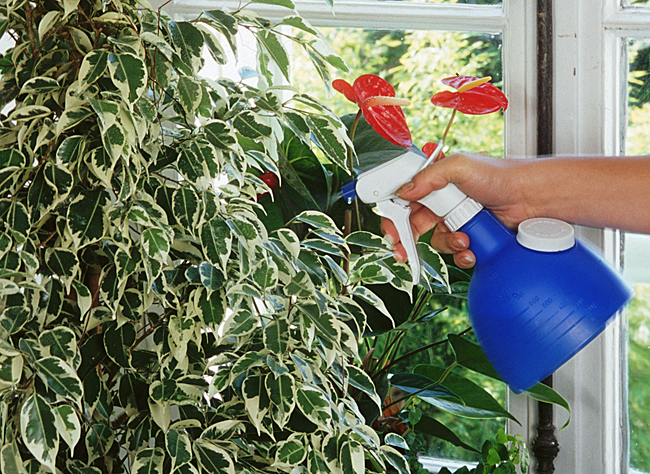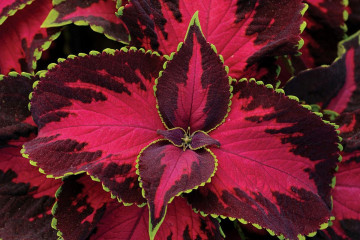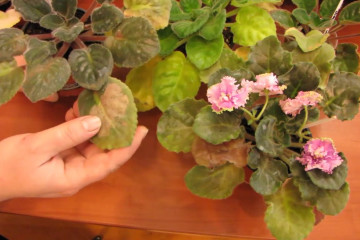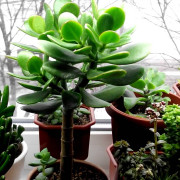Ficus - home care, ficus diseases
Content:
Ficus is one of the most popular indoor plants. The main reasons for this choice of gardeners are the unpretentiousness of the plant, its beautiful appearance and the beneficial properties that the flower possesses.
Ficus transplant after purchase into a pot
Indoor or decorative flowers do not require complex maintenance. By following a few tips, it is possible to grow a healthy and tall tree. The rules for caring for a ficus depend on the variety, so it is worth finding out when buying which species the plant belongs to. For example, variegated ones differ slightly from smooth-leafed ones.
After purchase, the plant must be transplanted. If you do not do this on time, the flower may stop growing and develop, and soon die altogether.
What is needed for landing
For landing you will need:
- Pot. It can be plastic, ceramic or wood. The new pot should be 4-5 cm larger than the old one to the edge.
- Drainage lining. This factor should not be overlooked, because with the help of drainage, excess water does not accumulate at the bottom and prevents the process of rotting of the root system. Any available means are suitable for lining: ordinary expanded clay, pebbles, finely broken brick, even foam balls.
- The soil. Ficus soil is sold as a ready-made mixture in flower shops, it is filled with the necessary minerals and elements for flower development.
How to choose the best place
In the wild, ficus grows in warm corners of our planet, mainly in Indonesia, Africa, off the shores of the Pacific and Indian oceans. Houseplants, like their tropical relatives, prefer to grow on the sunny side. At home, the flowering process does not occur.
The best place for the plant:
- warm;
- light and sunny;
- spacious.
In a hot period, you can take the flower out into the street or balcony, where it will be darkened. The sun will fill the leaves with color and give them color.
Ficus with dark green leaves, for example rubbery, more resistant to temperature and light changes. While the dwarf species loses its variegated color and tolerates weather changes quite hard.
Step-by-step planting process
Full care consists in watering, feeding, temperature and light conditions, transplanting. Early spring is called a suitable period for transplantation. In the period up to 3 weeks after the manipulations, the ficus can throw off all its leaves, so it reacts to stress. This is an absolutely normal state for him.
In order for the ficus to endure the adaptation process less painfully, it is covered with a plastic bag. This method will create a greenhouse effect and the plant will be more comfortable.
How to plant a ficus, step by step instructions:
- Moisten the soil about 24 hours before transplanting.
- On the bottom of the pot, pour the drainage mixture (expanded clay, pebbles) into a layer no higher than 2 cm.
- Sprinkle on top with a small amount of soil prepared in advance.
- Remove the flower from the old pot carefully and slowly. To speed up the process, you can knock on the sides of the pot.
- Carefully examine the ficus root. Only healthy roots can be transplanted. Injured areas can be covered with charcoal dust.
- Place the flower gently in a new pot.
- Cover the sides with the required amount of soil.
- Lightly water the soil itself, without getting on the plant, with warm, settled water.
- Place the ficus in a bright and warm room.
All flowers benefit from a transplant every 3-4 years. This is a prerequisite for longevity, health, growth and development of any indoor flower. In the spring and autumn, you need to do top dressing to enhance growth and health.
Reproduction of ficus
Ficuses are of different types - Rubber, Benjamin, Elastic, Lyre, Binnedika. Each variety can be propagated in two ways: by cuttings and growing from a leaf. Before starting the process of growing a new flower, experts recommend paying attention to some notes:
- they choose a warm season - late spring or summer is perfect;
- the newly planted plant is placed in the shade, since it does not tolerate a large amount of sunlight;
- before carrying out cuttings, you need to know that young shoots do not take root.
Propagation by cuttings
You can use cuttings from the middle of the shoot or the top. In order to separate the cutting from the main stem, it is better to use a sharp blade. It is pre-sterilized.
You can cut any length of the cutting, but a prerequisite is the presence of an internode. Without this, a new leaf cannot appear. The optimal size of a ficus stalk varies from 11 to 15 cm. It can have from 5 to 7 leaves. The stalk can take root in water or in the ground.
Reproduction process in water:
- Thoroughly rinse the edge of the stem from the milky juice under running cool water. This juice can inhibit the rapid establishment of ficus.
- Dip the tip of the cutting into a bottle of warm, clean water. The sheets should not touch the water.
- In this position, the cutting should be in a sunny place for 2-3 weeks.
- When the first roots appear, the plant is transplanted into the prepared soil. Drizzle lightly.
After 3 weeks, the first sprout will be visible. The shoot preparing for planting can be placed in a tall flowerpot with a thin neck.
Rooting the cuttings in the ground:
- As in the previous case, the slice is thoroughly washed from the milky juice under running water.
- Allow the edge to dry for 30-40 minutes.
- Several holes are made in a plastic cup.
- Planted and covered with earth until the beginning of the neck. To speed up rooting, you can plant a sprout in purchased soil - soil mixture.
- No need to water. Cover with a plastic bag on top.
The first leaves will appear within 3-4 weeks after planting.
Growing from a leaf
There are two ways to grow a full-fledged ficus from a leaf:
- grow the root system in water;
- drop off immediately from the ground.
The first way, how to root ficuses correctly, is the easiest and most working one. In this case, the stem is placed in water so that it does not touch the leaf itself. For a quick effect, you can drop a few drops of Ficus Growth Booster.
After 2 weeks, the first roots will begin to appear. It is not worth planting them right away. They may not develop in the ground, but simply fester. Therefore, you should grow 1.5-2 cm of the root, and then transplant it into loose soil.
The second method takes longer.This method consists in planting only the cut leaf directly into the ground. Experienced growers recommend holding the cutting in water with a growth activator for at least 12 hours before planting. If there is no time to wait, you can add the activator in powder form directly to the soil.
The leaf is wrapped and lightly tied with a ribbon or thread. A wooden stick is inserted into the formed tube as a support. The cutting is immersed in the ground along with the bud. After 3-5 weeks, the stepson will begin to develop.
Ficus: home care
How to care for ficus at home correctly? This flower loves warmth, good lighting and constantly moisturized earth. To please him is easy.
How to water ficus
Water consumption by ficus differs taking into account such factors: weather conditions, season, plant age, soil condition, level and phase of development, presence of diseases.
In the summer, the remaining water, which is drained through the drain, is left in the sump. In winter, on the contrary, the liquid is drained.
Dust and dirt settle on large ficus leaves at home, after watering, you always need to wipe them.
Top dressing
Rapid growth in plants begins in early spring and continues until mid-autumn. At this time, the ficus is fertilized every 15-17 days. You need to alternate mineral and complex supplements. Thus, the flower will receive both one and the other per month. In flower shops there is a huge selection of organic fertilizers for ficus.
Only the soil can be watered with various kinds of additives, it is forbidden to get on the foliage. Such mixtures can leave burns on the outside of the leaf.
It is not recommended to feed only transplanted or new flowers. The soil contains a sufficient amount of trace elements, oversaturation will only harm.
Young flowers, during the period of their active growth, are fed with fertilizers with a high nitrogen content. It promotes greening and color saturation.
Preparing for winter
Ficus is a tropical plant that is used to warm, even hot, climates. The harsh winters of Russia are hard for them to endure. Care for the colder months of the year should be different.
During the heating period, the humidity in the room decreases, this can adversely affect the general condition of the ficus. To increase the humidity in the room with the plant, a portable humidifier is installed. His work will be useful not only to the ficus, but also to the person.
Freezing is a common problem for flower growers in the winter. Any flowers should be removed from the floor and moved to insulated windowsills.
If the tree is tall, then the pot of soil itself is insulated. To do this, you can put newspapers, magazines, foam. The goal is to protect the roots from freezing.
Draft is another cause of plant death. The slightest flow of cold air can have a detrimental effect on the ficus.
It is worth paying attention that the leaves do not touch cold surfaces, to the glass of windows. The result will be twisting of the leaf, suppuration and death of the entire flower.
Diseases and pests of ficus
Ficus does not require much maintenance. But in case of non-observance of the above rules, the flower may wither or dry out. Diseases in ficus can manifest themselves as a result of improper care, fungal infections, and insect infestations.
A short list of diseases:
- Powdery mildew is a common disease characterized by white dust on the leaves, which can be washed off with soapy water. In the developmental stage, the flower is completely affected and sheds its leaves.
- Cercosporosis is a fungal disease. A sign of infection is brown and black spots on the seamy side of the leaf, and the cause is high humidity.
- The scale insect is an insect that infects and eats indoor plants.
Why do ficus leaves turn yellow
Leaves lose their natural green tint for the following reasons:
- If the lighting rules are not followed.
- If the air in the room is dry for a long time.
- Sunburn.
- Lack of nutritious fertilizers. Old leaves turn yellow, and new ones fall off.
- The soil is too wet. The flower is simply flooded and the leaves begin to rot.
- In aged ficuses, foliage may turn yellow - this is normal.
Most often, it is enough to eliminate the cause so that the leaves stop turning yellow.
How to trim ficus to keep it fluffy
Pruning ficuses helps to make the crown grow beautiful and voluminous. This is a delicate matter, so all instruments used must be sterile. Before you start forming the crown, you need to carefully study the general appearance of the ficus.
Cutting off the apical shoots stimulates the development of lateral buds. You need to cut off only above the bud, an evenly young stem. If the stem is thick, it is best to trim it at an angle.
Juice will flow from the wound, wipe it with a damp and clean cloth until it stops. Then sprinkle the cut with charcoal.
With proper and high-quality care, the ficus will give juicy leaves that will decorate the interior, delight the eye and help with their useful functions. It is the ficus that has the ability to filter the air, converting it into sugar and amino acids. Therefore, he will not only give pleasure with his beautiful appearance, but will also bring a lot of benefits.
